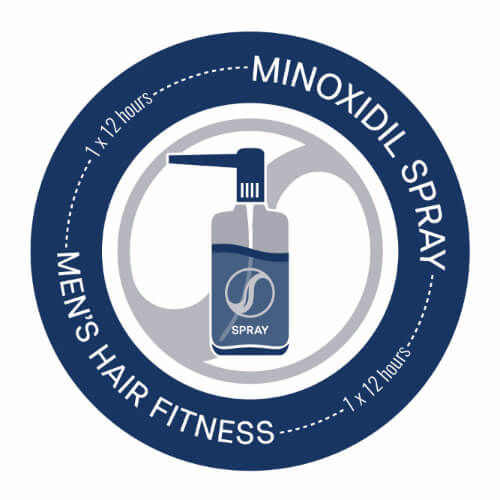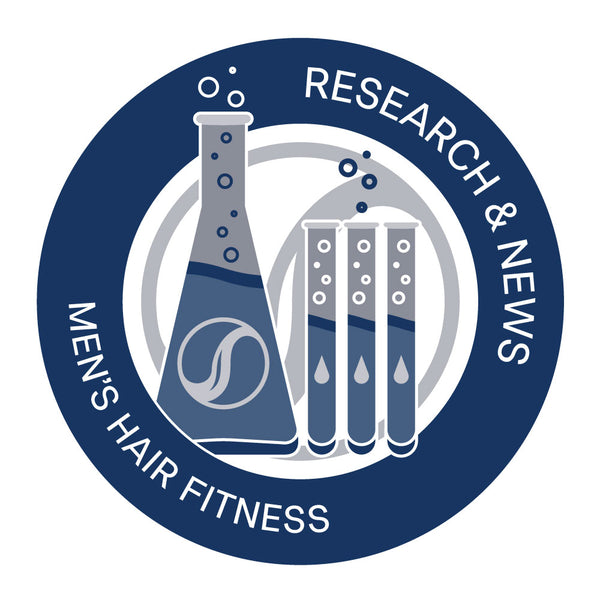How to sell snake oil
Hair loss is a big business
The value of the global hair loss treatment market currently stands at $2.7bn1 USD in 2017, which is not surprising when you consider how widespread2 male pattern hair loss is. Unfortunately, a market that large not only attracts serious research and clinically proven products, but also a host of more dubious “treatments” and in some cases completely unscrupulous “cures”. These can range from the seemingly well-intended but ineffective treatments to outright frauds. For this blog, we rounded up a few of the ways the unscrupulous dealers market their products so you can spot the frauds in the crowd. Sadly, the frauds and scams perpetrated on men have turned so many off hair loss treatments altogether, despite there being clinically proven, safe and effective treatments with which they can manage their hair loss.
Repeat after me - "There is no such thing as a cure for male pattern hair-loss"
The most important point to keep at the forefront of your mind is that THERE IS NO CURE FOR MALE PATTERN HAIR-LOSS. You inherit your risk of experiencing the most common form of hair loss in men 3, androgenic alopecia or male pattern hair-loss, from your parents4 - it is literally written in your genetic code. Once it begins, a naturally occurring derivative of testosterone5 will disrupt and eventually kill off a large proportion of the hair follicles in your scalp. There is no one-off wonder pill or three-week course of creams which will change your genetic code and cure your thinning. The good news, however, is that there are clinically proven, safe, and effective treatments for you to use to manage and even roll back your hair loss.
Making cosmetic claims
A common way of getting around advertising standards on claims of effectiveness is to make purely cosmetic claims about the results of a product “thicker and fuller” is a classic. By making purely cosmetic claims, the effectiveness of a product is pushed into the realm of subjective assessment. If none of a product's active ingredients are recognised, clinically proven treatments, then the best you can expect is the product will make your hair smell nice.
Phantom clinical trials
Randomised, controlled clinical trials are the gold standard of medical treatment. At least three rounds of trials on increasing scales are required to get a new pharmaceutical approved. This process takes years and generates large amounts of evidence. If you are looking at a product that makes vague, unverifiable claims regarding “trials” or refers to a single small study with no other evidence then be very cautious. New treatments are under development all the time, given the size of the market that's not surprising. However, given that there are existing treatments with clinically proven effectiveness, we’d suggest sticking to what is known to work, especially if you are in the early stages of hair loss. Using ineffective treatments can not only cost you large amounts of money, they can waste valuable time, during which you are still losing hair.
You have to love the gumption
In an amusing example of life imitating art actual “snake oil” is actually touted as a “cure” for baldness. From the very literally named Snake Oil for Hair “Snake oil is permanent solution for your loss hair”6. For those of you who, like us, had visions of a Turkish guy dropping cobras into a big roller press, you’ll be pleased to know that this oil has never gone near a snake. Instead, it appears to be a combination of sesame and other plant oils. This is absolutely hilarious until you realise they are selling this stuff to people for over $50 for an 80ml bottle in some cases.
Hiding behind jargon
The use of jargon to bamboozle people is as old a practice as sales itself, just consider the last time you talked to a car salesperson. In the hair loss market this can take many forms, but perhaps the most interesting is to claim a product is “all natural” and then include Loniten in the ingredients. Loniten7 is minoxidil by a little-known brand name. Ironically, this means you are receiving an effective treatment, but minoxidil most certainly does not come from a plant. We believe that you should know exactly how and what you are being treated with, misleading labeling, even if it’s to gloss over a genuine treatment, is not on.
FDA approval is not the same for medicines and devices
A classic technique used to sell gadgets to men with thinning hair is that the bar for FDA “approval” for a device is much lower than for a pharmaceutical. Watch out for this in the marketing of laser combs, helmets and similar devices. To sell a device, a manufacturer only has to demonstrate safety, that it does not hurt the patient, as opposed to efficacy, where it demonstrably and effectively treats the condition it is being sold for. There is some very limited and controversial clinical evidence that light therapy can treat hair loss but the FDA has certainly not made a judgement that it is effective. This is opposed to minoxidil and finasteride which both have plentiful clinical evidence of efficacy and have been FDA approved as effective for the treatment of androgenic alopecia. Purchase a laser comb if you have a burning desire by all means, who wouldn’t want to shoot lasers at their head? However, don’t take their FDA “approval” as evidence they work, regardless of what is artfully implied.
Don’t let the charlatans distract you
The sad truth, when you consider all of the miracle potions and creams, is that many men get disheartened and give up after they spend considerable amounts of their hard-earned money on completely ineffective treatments when there are effective alternatives. The bad news might be that there is no “cure” for male pattern hair loss, but the great news is that there are proven and effective treatments with which you can keep your hair fit and healthy. Here at Men's Hair Fitness, we have a great range of products available to buy one off or as convenient cost-effective subscriptions to help you build an effective routine and stop the loss!
- $2.7 Billion USD is the projected size of the global hair-loss treatment market for the calendar year 2017 see Statista
- See our blog post on the epidemiology of male pattern hair-loss for a discussion of just how widespread this condition is.
- Androgenic alopecia commonly known as male pattern hair-loss or male pattern balding is responsible for over 90% of all of the cases ofhair losss in men. In declining order or prevalence the other causes are alopecia areata, and trichotillomania.
- Studies on twins have demonstrated that 80% of hair-loss is attributable to genetics see Nyholt DR, Gillespie NA, Heath AC, Martin NG. Genetic Basis of Male Pattern Baldness. Journal of Investigative Dermatology. 2003;121(6):1561–4.
- See our blog post on the joint roles of genetics and DHT for background on the actual mechanism involved in male pattern hair-loss.
- Yes that is a direct quote, grammar and all.
- Loniten is the brand name of an oral form of Minoxidil predominately used to treat heart conditions.
Also in Research & News

Saw Palmetto - a natural way to reduce DHT
An alternative for Men who want to explore a more natural way of blocking DHT is Saw Palmetto. Widely used in the treatment of enlarged prostates, a condition closely hormonally linked to hair loss, there is good scientific evidence that it significantly reduces free DHT and thus protects your hair.
Learn how Saw Palmetto acts to reduce thinning by disrupting the production of DHT. This can have a powerful impact on its own or it can be used to enhance the effect of other treatments as part of a combined program.

What to expect from minoxidil treatment
In the short-term Minoxidil will halt further loss in 95% of men after 3 months of a twice-daily routine. Over a few months, 60% of men will report significant regrowth, especially for those that act quickly to stop the loss. After a year of continuous use, you should expect the initial gains to stabilize as you hair bounces back and you get the thinning under control.The key to using minoxidil is to get into and stick with a healthy routine to get on top of your hair and maintain your gains.

Finasteride - treating hair loss by blocking the production of DHT
Finasteride is one of two FDA-approved medicines for the treatment of androgenic alopecia (male pattern hair-loss). Developed on the back of insights around male sexual development it was released in 1997 after over 20 years of development. It works by blocking the production of a hormone which degrades your hair follicles and in large-scale studies, it has shown to help maintain and in some cases promote hair growth.
